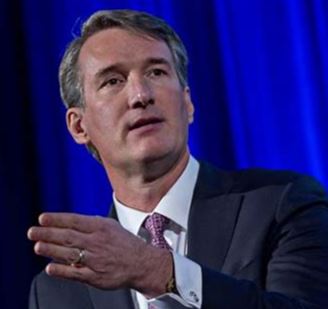With educational outcomes for Virginia public school children collapsing across the board, I’m not sure that the use of pronouns and restrooms for transgender students is the most urgent policy facing our schools today. But both sides of the culture wars are determined to fight this battle, so it continues to consume an inordinate share of our attention — as when Governor Glenn Youngkin issued yesterday his revised “model policies” for treating transgender students.
I will spend little time rehashing the details of the new model policies, which you can read here. The Washington Post summarizes the key points, as do the state’s other major newspapers. In broad brushstrokes, Youngkin’s purpose is to strengthen parental rights, restricting the ability of schools to make contentious decisions regarding a student’s gender identity without the parents’ knowledge and consent.
I’m more interested in peripheral — yet telling — aspects of this story. I’m interested in seeing how the shapers of public opinion are constructing their narratives.
It is interesting to see how Team Youngkin attempts to frame the narrative. You can see it in the full title of the document: “Model Policies on Ensuring Privacy, Dignity, and Respect for All Students and Parents in Virginia’s Public Schools.”
“All children in Virginia deserve to have a parent engaged in their life and to be treated with dignity and respect,” Youngkin said in a statement Tuesday. “The VDOE updated model policies reaffirm my administration’s continued commitment to ensure that every parent is involved in conversations regarding their child’s education, upbringing, and care.”
Privacy. Dignity. Respect. Parental involvement. Those are all positive things. Good messaging.
Now, look how the Post frames the story. It provides this paragraph of national context:
Youngkin’s policies made Virginia a flash point in a national discussion — mostly by conservative lawmakers — regarding regulations and restrictions around the treatment of trans youths in schools. And it matched a trend of increased legislation and targeting of trans youths. A Washington Post analysis found that in 2022, more legislation had been filed to restrict the lives of trans people than at any other point in the nation’s history.
See there? The controversy is mainly the making of conservative lawmakers. Conservatives are the ones introducing legislation “targeting” trans youth. Indeed, more legislation had been filed to “restrict the lives of trans people” than at any other point in the nation’s history.
One would imagine from this casting of events that transgender students had been imbued with unalienable rights for centuries and only now in the 2020s, gripped by the fever of the culture wars, conservatives are seeking to roll back those rights. One would never suspect that transgender rights in public schools were not even a dot on the radar screen at the turn of the century, that they surfaced as an issue for a tiny number of students identifying as transgender less than a decade ago, nor that existing transgender guidelines, like those written for Virginia during the Northam administration, occurred in an opaque administrative process with almost zero input from parents or legislators.
Given the fact that the transgender issue has materialized almost overnight, one might just as easily report, should one trouble himself to do the research, that more legislation has been filed to restrict the rights of parents on transgender issues than at “any other point of the nation’s history.”
Which brings me to the second observation. The Post cites research that “suggests” that 4,000 of the state’s 1.2 million school children are transgender. It may be true that 4,000 children have identified as transgender, but that’s a very different thing from saying that they actually are.
Transgenderism is a very real phenomenon. A few children identify as members of the opposite sex from a very early age and never veer from that assessment throughout their lives. The cause likely arises from an abnormality in fetal development. No caring person wants to see these individuals bullied or mistreated, and it is appropriate for schools to implement policies that deal with the issues that arise from their condition.
But that tiny handful of children is not driving the transgender debate today. Now we’re talking about 4,000 supposedly transgender children in Virginia alone — children whom many are urging to undergo endocrine and surgical treatment. Folks, the surging numbers indicate that this is a social-contagion phenomenon, in which troubled children undergoing adolescence seek explanations for their confusion, anxiety and depression and receive positive feedback from a progressive educational and medical establishment.
One can argue endlessly the rightness or wrongness of “affirmative” treatments for adolescents that could disfigure them permanently if, as many do, they conclude later in life that they are not transgender after all.
One can safely say without qualification, however, that the efficacy of the treatment is controversial and contentious. The question, then, becomes who should make life-altering decisions for their children — schools or parents? I’m betting that most people, especially those with offspring, will side with the parents.



